For the past half-dozen autumns I've written to you about the attempts of Jamie Partridge, Laurence Pitcher and myself to locate American passerines on St Agnes, Isles of Scilly – sometimes successfully, sometimes not. In those quieter moments we have been hatching a plan to return to source and see those birds in their native land. Having personally volunteered at Canada's Long Point Bird Observatory, on the northern shore of Lake Erie, Ontario, for two springs in the mid-1990s, I recently managed to convince my two friends, plus former Cape May colleague Fred Fearn, that this site, rather than the better-known Point Pelee to the west, ought to be where we concentrate our efforts. Luckily, we hit it just right.
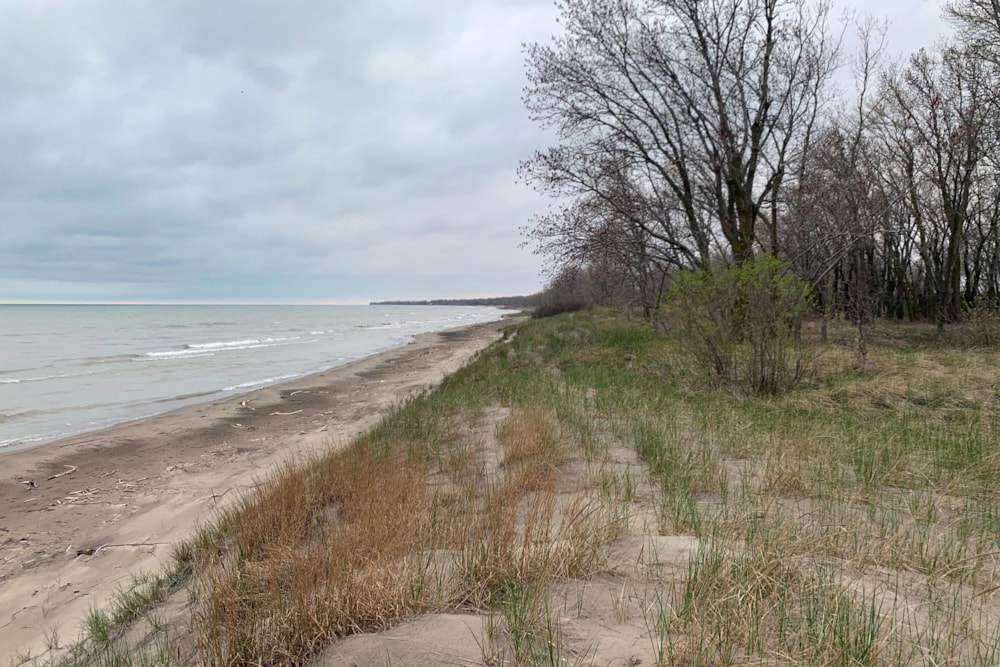
Long Point is a 40-km sand spit that juts out into Lake Erie from the Canadian (north) shore. Its geographical position makes it an ideal locality for migrant birds in spring and autumn (Jamie Partridge)
From the moment we stepped outside the car in front of our hired cottage on the evening of Sunday 5 May, our binoculars barely left our eyes. Our host, Adam Timpf, was a local birder and conservationist and had generously stocked the bird tables outside our veranda. Within the first five minutes, Dark-eyed Junco, Chipping, White-crowned and White-throated Sparrows, Blue Jay, Red-breasted Nuthatch and Ruby-throated Hummingbird bump-started our list. The short walk across the road to the Bird Observatory woodlot as the sun went down yielded male Hooded and Cape May Warblers, as well as two Sandhill Cranes flying over – a bird I didn't see in my two months here previously. A displaying American Woodcock at dusk rounded off an eventful first two hours, the bird circling in the air twittering continuously for a full-minute before returning to the exact same spot on the ground each time.
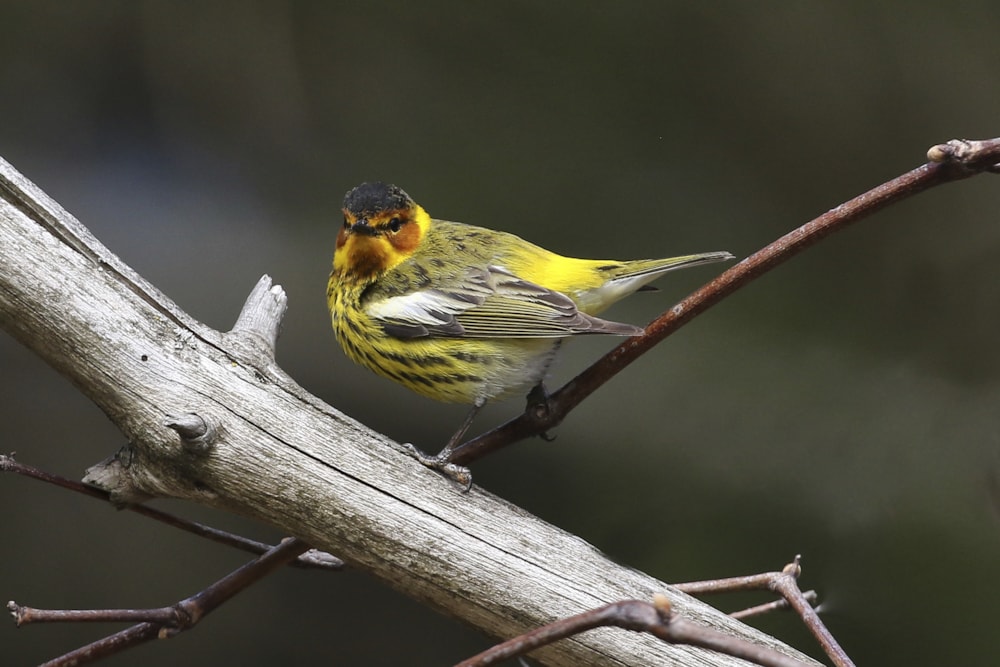
Welcome to Canada! Outrageously coloured male warblers, like this dashing Cape May, were on show from the very first evening (Jamie Partridge).
Our first full day at Long Point was an absolute joy, wandering around slowly and reacquainting with warblers and thrushes that some of us hadn't seen in nearly 20 years. A half-dozen each of splendid male Rose-breasted Grosbeaks and Baltimore Orioles appeared on our garden feeders, along with White-breasted Nuthatch and Red-bellied Woodpecker. But it was the second day that was to provide us with the most exciting 'fall' of our 10-day visit: a day of birding that surpassed even my expectations based on memories of earlier stays.
We'd agreed to spend at least the first couple of mornings birding as a group before we later started to drift off our separate ways. This was partly for the pleasure of shared excitement, but more practically for the advantage of multiple eyes as the birds moved through. This particular Tuesday morning I'm about to describe, as many pairs as possible were truly a necessity. Having been forewarned by the locals for the potential of a good day in prospect, the four of us set off in the early morning darkness to the Long Point Provincial Park at the end of our street. As the light rose a dozen or more of the local breeding American Yellow Warblers struck up their sweet sweet sweet, I'm so sweet songs from the nearby reedbeds and a loose flock of 50 White-throated Sparrows crossed the road in front of us.
Then it began. Someone spotted a male Blackburnian Warbler, albeit briefly. The others tried to get on to it. An Ovenbird sang. Male Cape May Warbler, followed by a Magnolia. The Blackburnian again. Male American Redstart. Veery. Another 30 White-throated Sparrows in a gang. Another Blackburnian, seen by all. Nashville Warbler. Northern Waterthrush singing behind us. Swainson's Thrush. Lincoln's Sparrow. One after the other, in quick succession … and that's the first five minutes of the day!
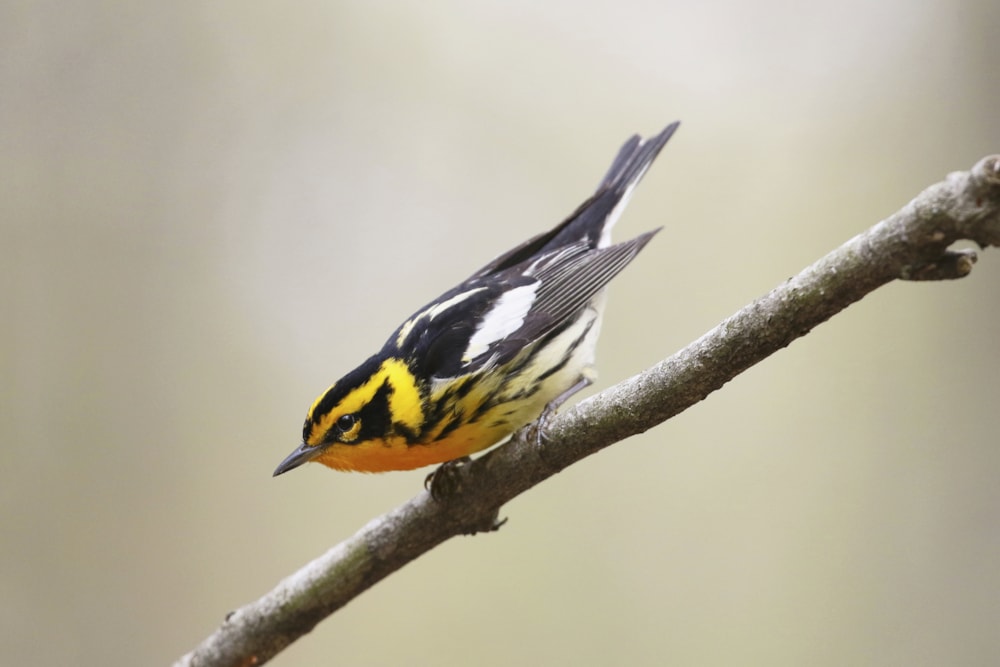
Blackburnian Warbler, Long Point, Ontario (Jamie Partridge).
And so it went on for much of the next hour ... barely covering a kilometre, over a dozen warbler species were easily seen, many of them briefly, simply because as soon as one had identified them, binoculars came down and you moved on to the next. Sometimes you would put up your binoculars to look at a single movement and identify three species in one view: male Black-throated Blue, Northern Parula and Cape May Warbler stand out for me as one memorable binocular-full in that incredible first hour.
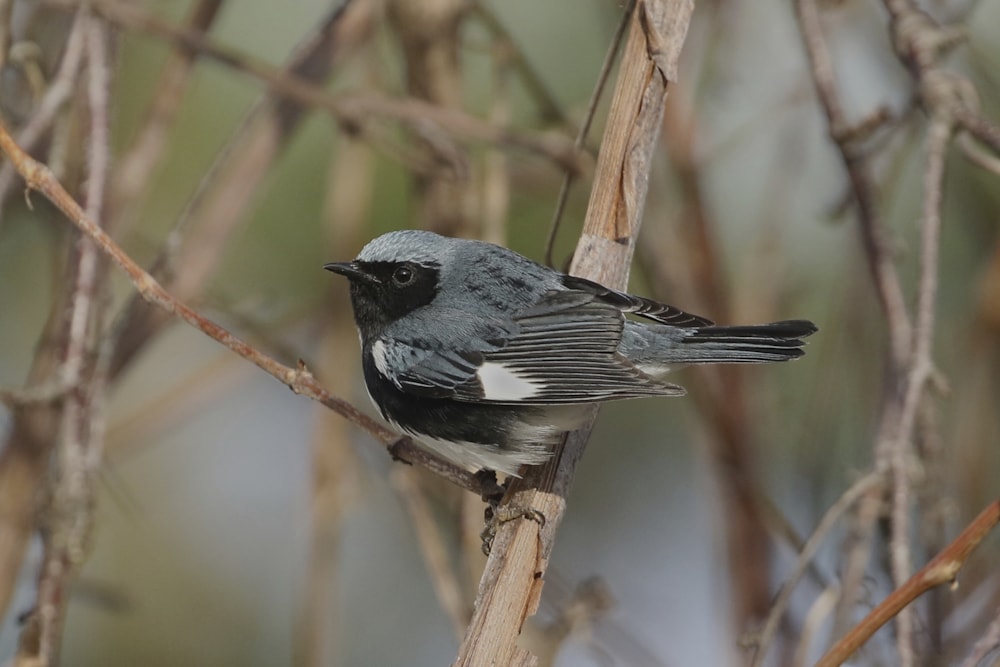
Male Black-throated Blue Warbler is another star of the show during a spring visit to Long Point (Jamie Partridge).
Consolidation would come later in the day – and indeed during the week on slightly quieter days, when one could take the time to look at each individual warbler in more detail. But for now, the excitement was in the recognition that there was a veritable fall of migrants in progress and though many had gone into circuitous feeding mode immediately, others were still zipping energetically through the trees, looking for the most suitable place to spend the day.
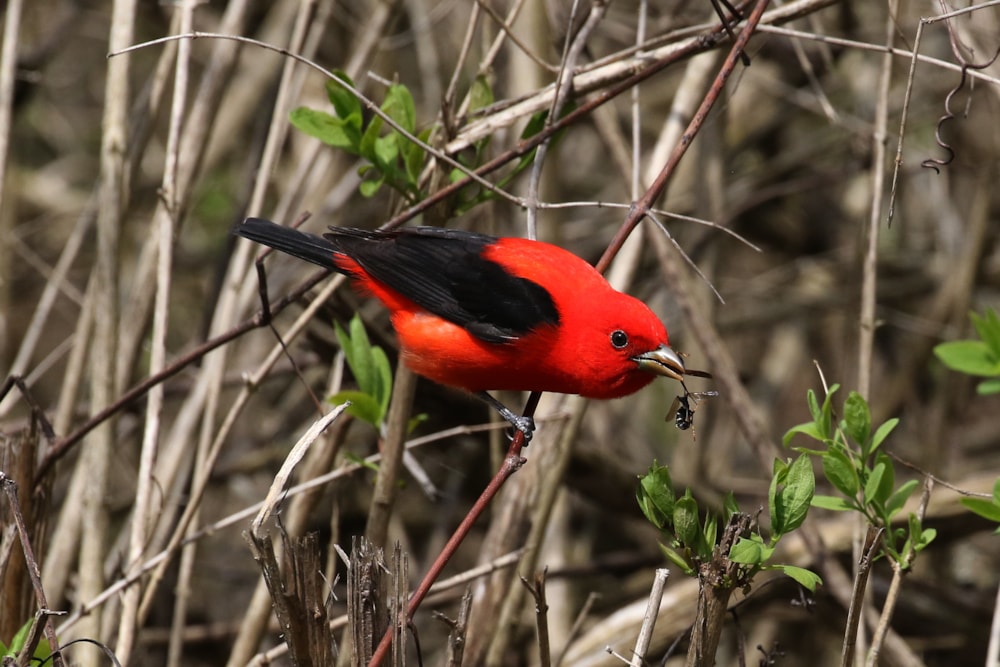
Few North American birds are as vivid as Scarlet Tanager. This species is reasonably common at Long Point in May, with the males looking particularly gaudy (Jamie Partridge).
From the bird observatory perspective, Long Point is divided into three parts. Two of the ringing stations are accessible to long-term volunteers only but the third, known as Old Cut and situated at the headquarters, is open to the public. Old Cut sits at the very base of the long, sandy spit which juts out into Lake Erie and, with its taller mixed trees, acts as a repository for many birds seeking to find the best shelter and most food.
On this morning in question we were to see a minimum of 30 Ovenbirds and another 100 or so White-throated Sparrows feeding on the ground in what is essentially a very tiny area, walkable in 10 minutes without birds, but usually taking at least an hour due to the activity at all levels of cover. In the treetops, some 20 Northern Parulas could be seen and heard singing – a number 10 times higher than I'd recorded in two months last time around. Blue-winged Warbler, Black-and-white Warbler, dozens of Ruby-crowned Kinglets, a brief Golden-winged Warbler and our first Yellow-bellied Sapsucker were also among the assorted cast.
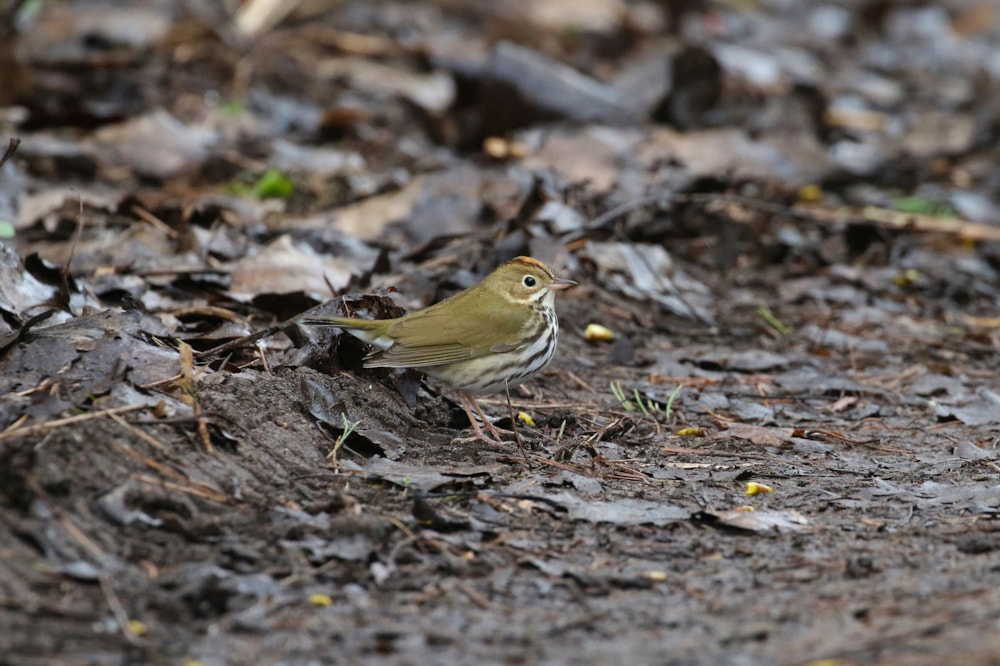
Ovenbird is less absurd in colour than most other warblers, yet its charisma is arguably even greater than its flashier cousins (Jamie Partridge).
By the end of that momentous second day I figured I'd personally seen between 500 and 1,000 warblers of 21 species. At one point in the early afternoon, I counted a mixed flock of a hundred warblers crossing a gap between bare trees in the course of five minutes. Superlatives run out on a day like this. Such intensity of colour in nature is a thing to behold in itself: deep yellows, intense blues, sizzling reds and oranges – even the whites on the underbellies of some of these exquisitely patterned creatures seem to add their own vibrant source of light to the day. Whisper it, but it was almost a relief there was a clear-out that night and we were left with just a half the number of species and a quarter the number of individuals the next day. As indicated earlier, this is the time to absorb in more detail those birds one has passed off in the heady moments of a busy morning.
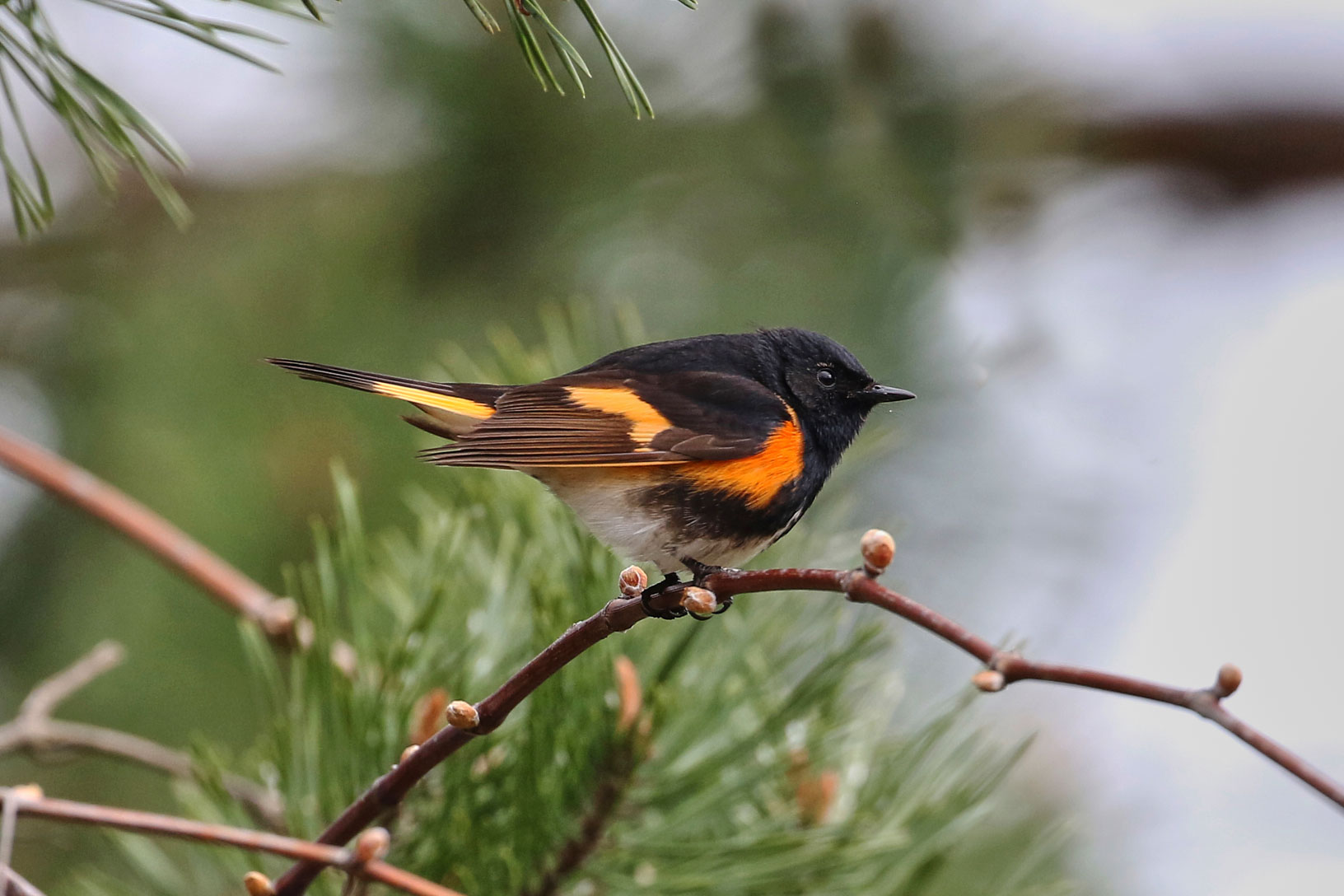
The unique combination of black and fiery orange makes a male American Redstart instantly recognisable (Jamie Partridge).
The lull didn't last long, however. Such is the dynamic schedule of the waves of these migrating Neotropical songbirds in these middle two weeks of May that often no sooner have one set of northbound birds departed, another set arrives. This time, delightfully, it was characterized by a dozen each of male Cape May and Blackburnian Warblers in the first hour alone – birds that were be watched and photographed over and over again later in the afternoon. Nowadays, software called Birdcast offers birders in North America a nightly radar update that shows where the biggest waves of northbound migrants are occurring and gives forecasts for the potential volume of a flight the next day. This tool was of great value to us on the good days and also helped to indirectly inform us when would be a good time to venture away from the migrant traps to visit the more extensive mixed forests nearby.
Within easy driving distance of Long Point are two areas that excel for seeing North American summer visitors in their breeding quarters. The first, Wilson's Tact, 20 minutes away, is where we managed a singing male Golden-winged Warbler, along with a shy Pileated Woodpecker that eluded our efforts to see properly. There were singles of Veery, Wood and Swainson's Thrush feeding by the side of the road, and later in the day, from time to time, one or other of these beautiful birds would give off a snatch of their hauntingly melodic territorial song from deep within the woods. Backus Woods had Pileated Woodpecker too – this one showing slightly better – but he was upstaged by prolonged close-range views of a drumming male Yellow-bellied Sapsucker.
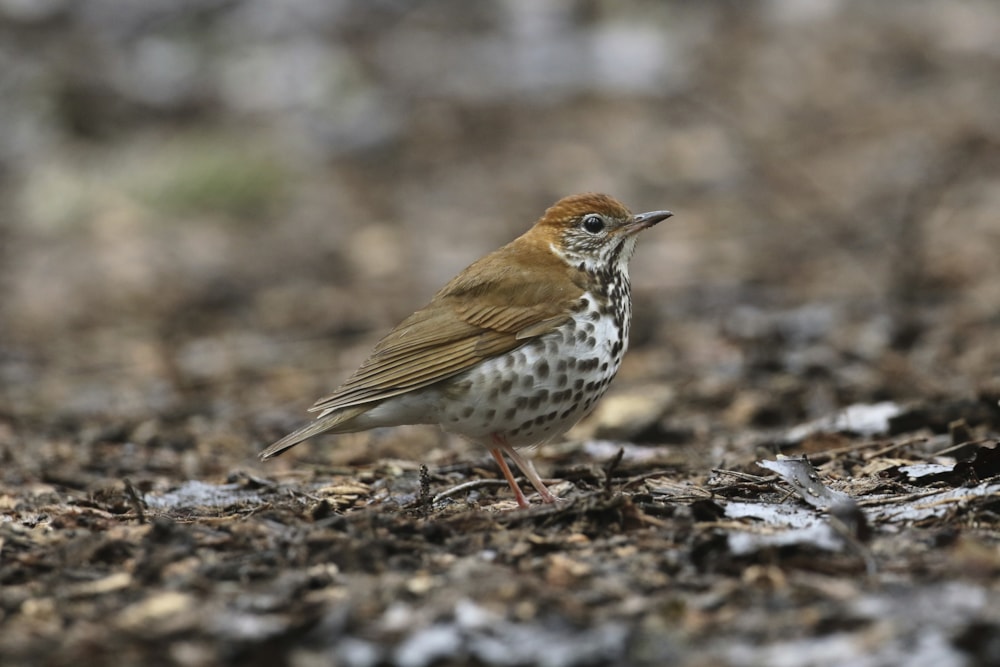
Wood Thrush is an attractive species with a rich, haunting song to match its classy appearance (Jamie Partridge).
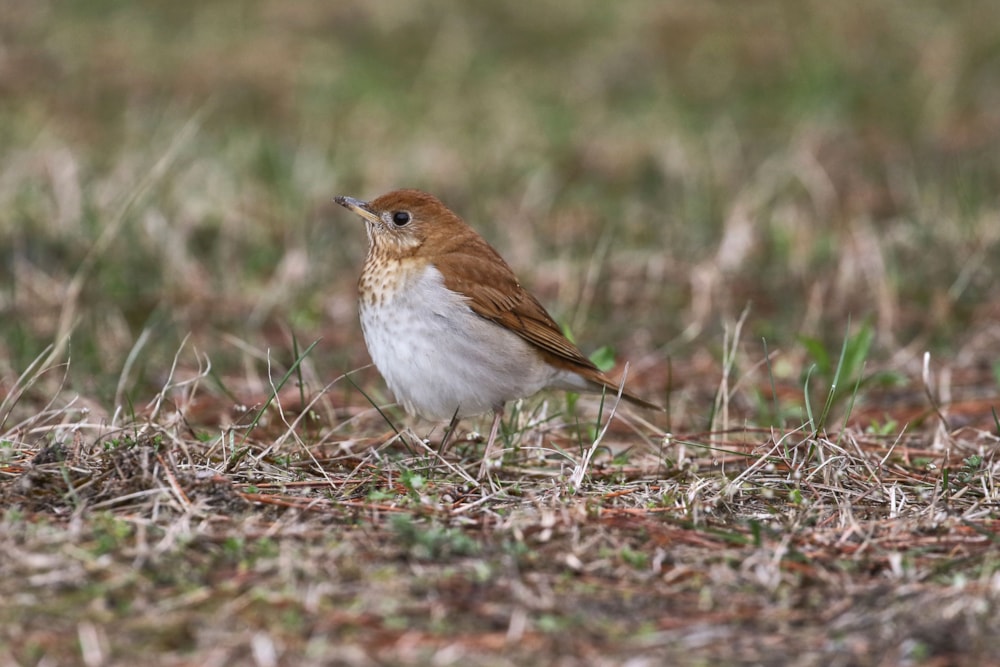
Another thrush species, Veery, is also readily found both on migration and at its breeding grounds (Jamie Partridge).
The woods at Backus are wetter than Wilson's Tract and hold one of only 20 breeding pairs of Prothonotary Warbler in Canada. We managed to see them well on two visits, but they rather had to share the limelight with another outstanding assortment of migrant warblers feeding low down around the murky, stagnant pools. Yet again male Blackburnian Warbler stood out as the one you couldn't take your eyes off, but Cape May, Bay-breasted, Myrtle, Chestnut-sided, Black-and-white and Magnolia all featured too.
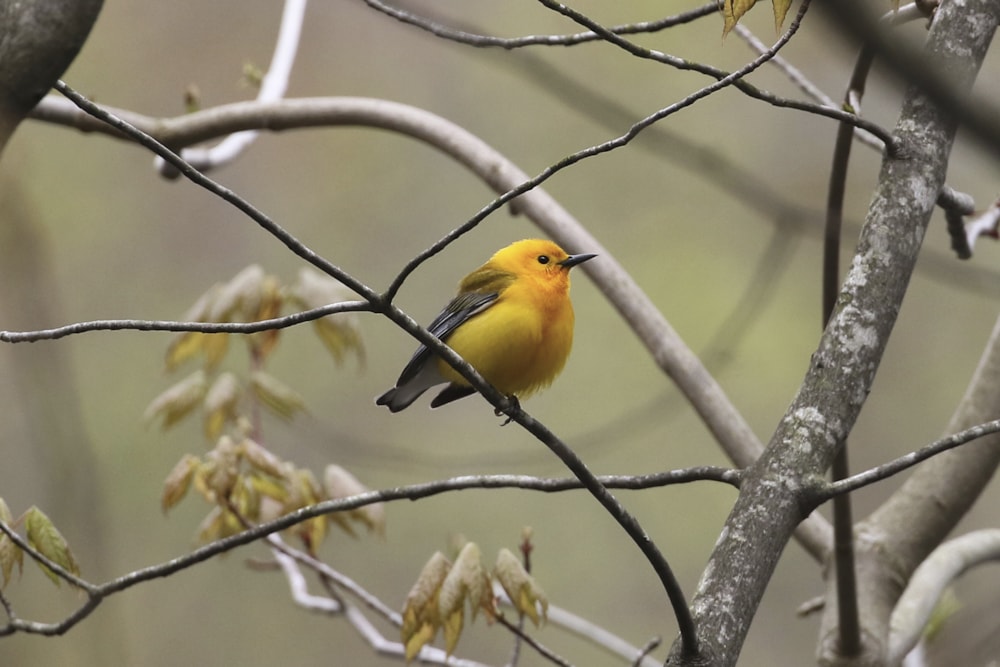
Prothonotary Warbler is a rare and localised breeder in Canada, with Long Point one of very few reliable localities to see it (Jamie Partridge).
Most of the warblers are easily recognised on sight alone, but the same cannot be said of their voices. Their high-pitched, silvery songs kept us guessing throughout our 10-day stay. Of the 34 regularly occurring east-coast species, only about a quarter could be said to have songs that are distinctive enough to identify to species on first listen. Half the others can be divided into groups of three or four species with particularly similar voices – ones which could be separated with practice but were better confirmed by a visual sighting. Magnolia and Chestnut-sided Warblers sound extremely similar, for example. Both have short, sweet songs that end in a high-pitched, jumbled flourish, but then so does the similar-sounding American Yellow Warbler – and indeed the not-so-very-dissimilar Hooded Warbler. In fact, American Yellow Warbler can be very confusing altogether since it has two slightly different songs that can end up sounding like at least six other species. Northern Parula also has two separate songs that the same bird can utter at much the same time – a trill that belongs to the easily recognised category, but also a longer, slower, lazy four-note song that needs care to distinguish from Black-throated Blue Warbler.
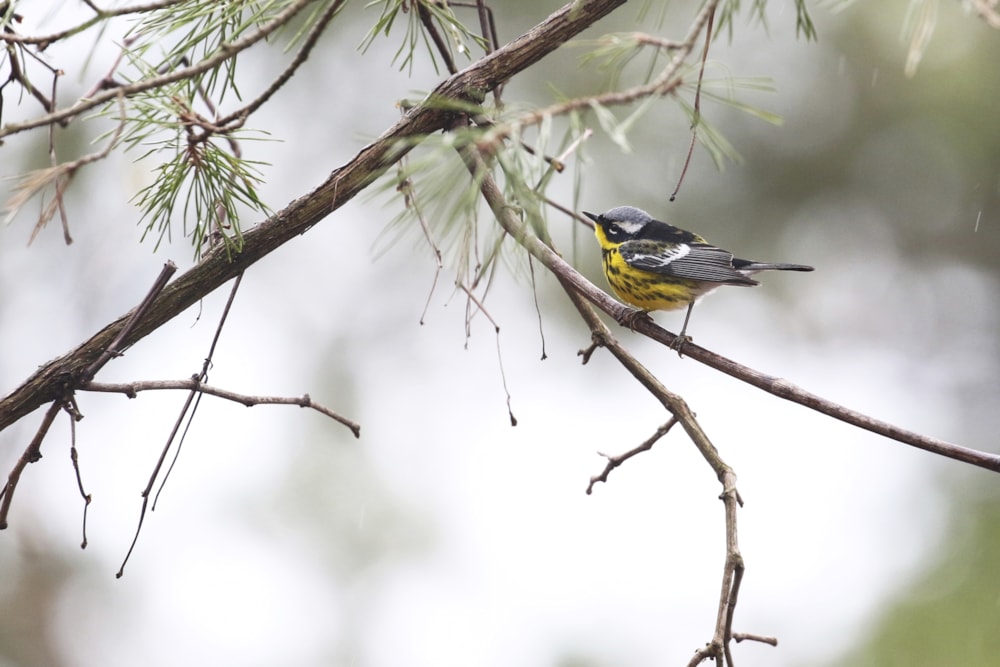
Male Magnolia Warbler is instantly recognisable by sight, but identifying it on call presents a much sterner challenge (Jamie Partridge).
Naturally the warblers, grosbeaks and orioles are obvious first attractions for any birdwatcher in North America, but the sparrows, I should imagine, somewhat less so. It does seem, however, to be a trait of the British birder overseas that we champion such underdogs; and there was no shortage of appreciation voiced for the Savannah, Grasshopper, Field and Vesper Sparrows that we found in suitable breeding areas between the woodland sites, and especially not for everyone's favourite: the finely etched Lincoln's Sparrows that proved surprisingly common throughout the 10 days, even occurring in double figures on some. Being on a trip with Jamie and Laurence inevitably meant a diversion to look at gulls, and this we managed 20 miles up the road at Port Dover: a few first-summer Bonaparte's and Ring-billed Gulls having a cursory look at our profered slices of bread.
Largely unrepresented on a trip to Long Point at this time of year are shorebirds, although Jamie did manage a Hudsonian Godwit flying over on our last morning (and we did have a Killdeer nesting in the driveway across the road from us). One family that does get a big mention, though, is the bitterns. Early on in the week I flushed an American Bittern at point-blank range in the Provincial Park – a bird that then went on to try to hide itself from me by adopting its vertical sky-pointing posture despite being right out in the open! Later in the week I watched a different individual perform its unique 'wull-up' display from on top a large bed of Phragmites while a nearby female looked on. A female Least Bittern, seen rather briefly at close range at the edge of the lake, was a prelude to an outstanding protracted performance from a fishing male on our last evening.
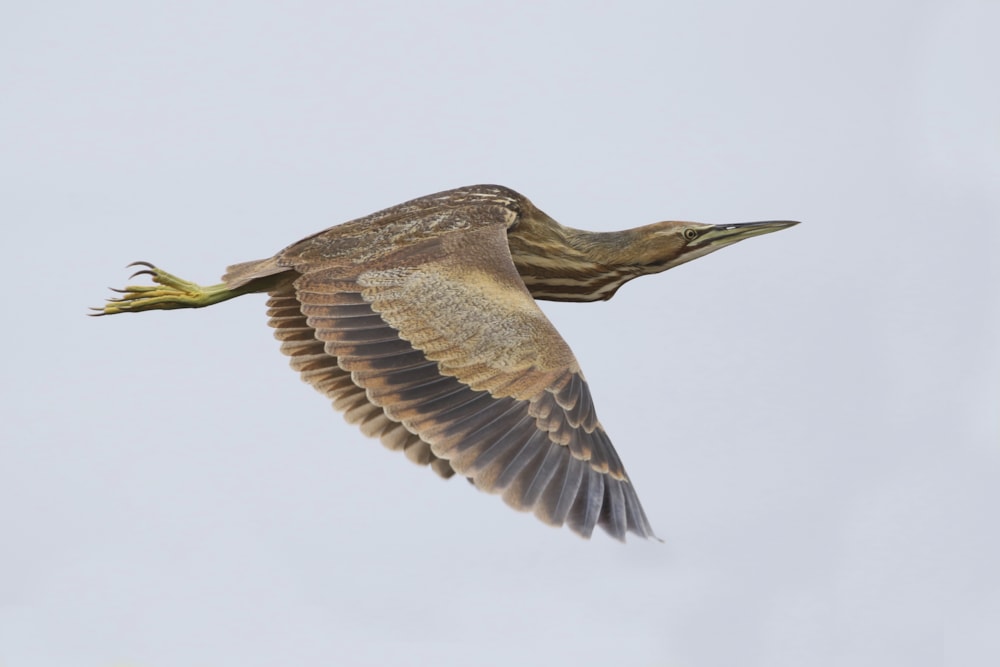
Waterbirds at Long Point included this sumptuous American Bittern (Jamie Partridge).
When it came to leaving, we joked about each of us taking a souvenir bird home to release on Scilly this coming autumn. But which one would you choose? I'd certainly be happy with a Lincoln's Sparrow in my back pocket, but really, how can anything take second place to a male Blackburnian Warbler?
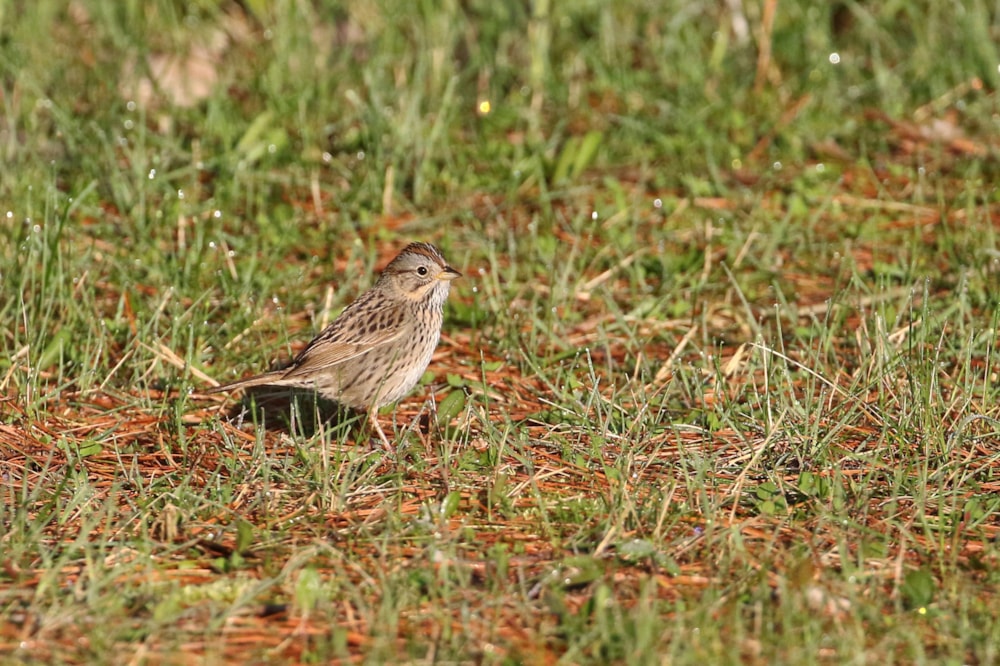
Graham would have loved to have smuggled a Lincoln's Sparrow back to Scilly in time for this autumn ... hypothetically, of course (Jamie Partridge).
The truth is that it's cruel to pin a person down to singling out a favourite from among all these jazzy warblers, not to mention the thrushes and sparrows ... it's their very ensemble, their mixed feeding flocks, one on top of another, waves of birds almost shoulder to shoulder, joining forces in one of the most breathtaking events in all of the natural world that makes for such a rich experience for the visiting birder. We see documentaries about the migrations of wildebeest, geese and cranes – large, television-friendly creatures – yet somehow the cameras have overlooked this equally compelling songbird spectacle that passes in waves across North America each spring. If you haven't seen it yourself, I suggest you make it a priority for next year. Until then, I hope Jamie's pictures give you a taste of the mouth-watering prospects in store for you.
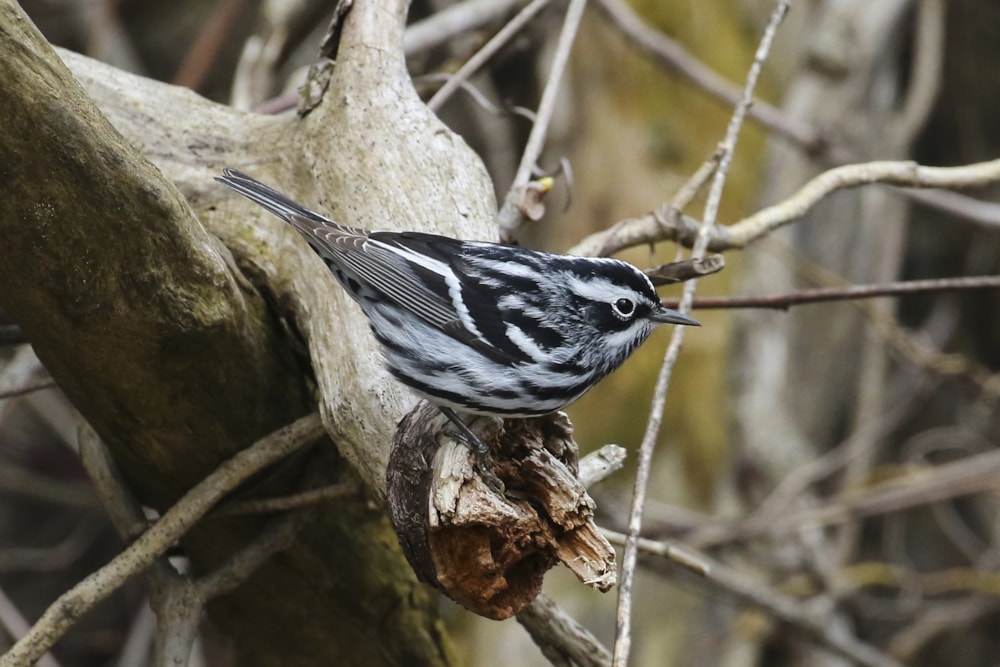
Black-and-white Warbler is a birders' favourite (Jamie Partridge).
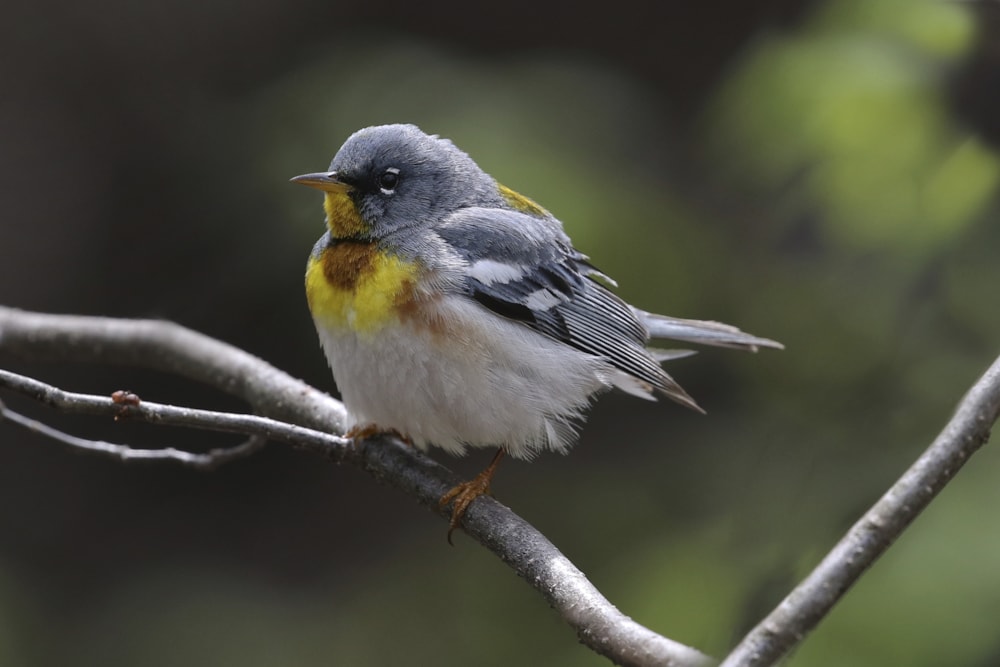
Northern Parula, one of the commonest and most widespread of the North American warblers, was a routine fixture during the week (Jamie Partridge).
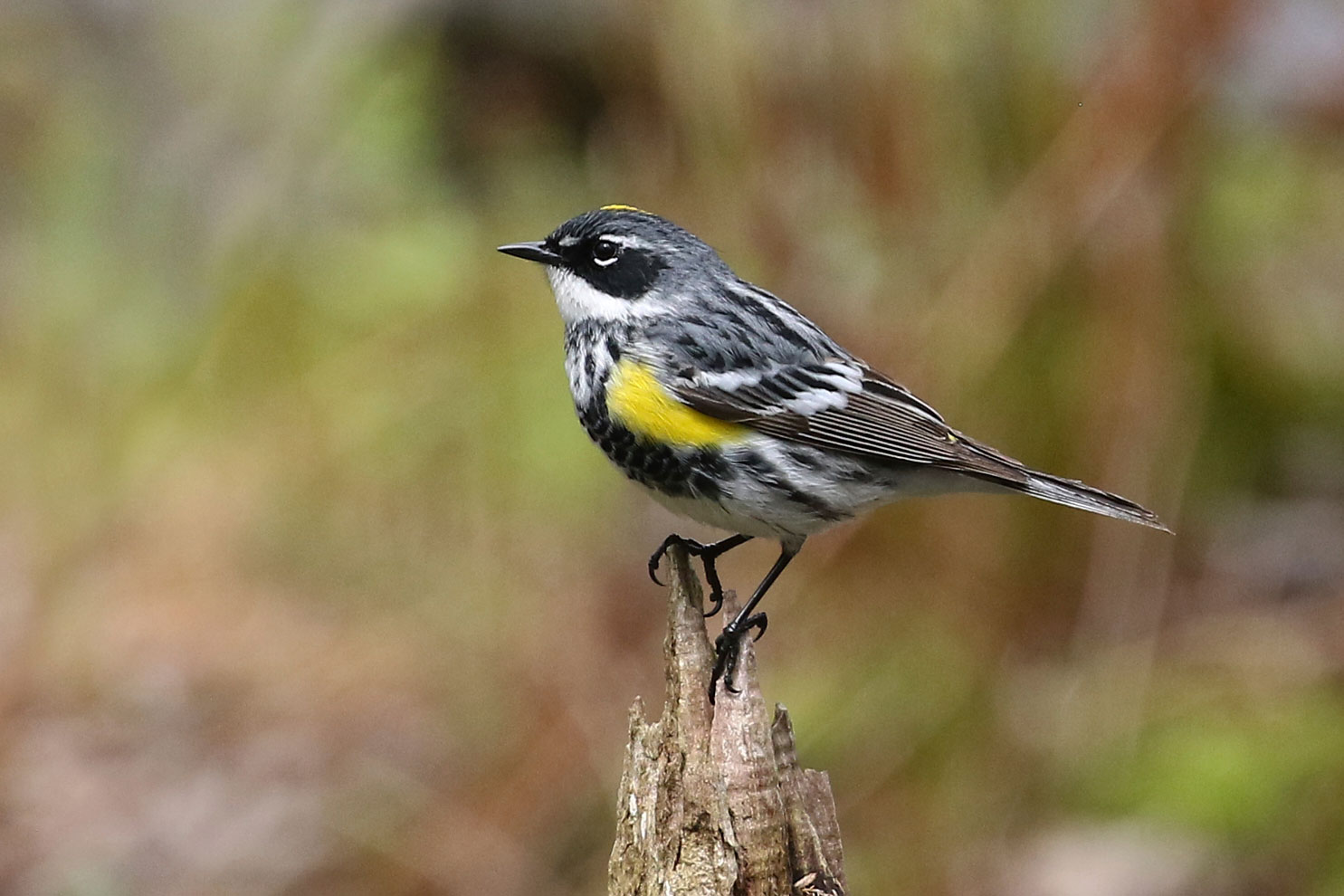
Another common and regularly encountered species is Myrtle Warbler; this one is a male (Jamie Partridge).
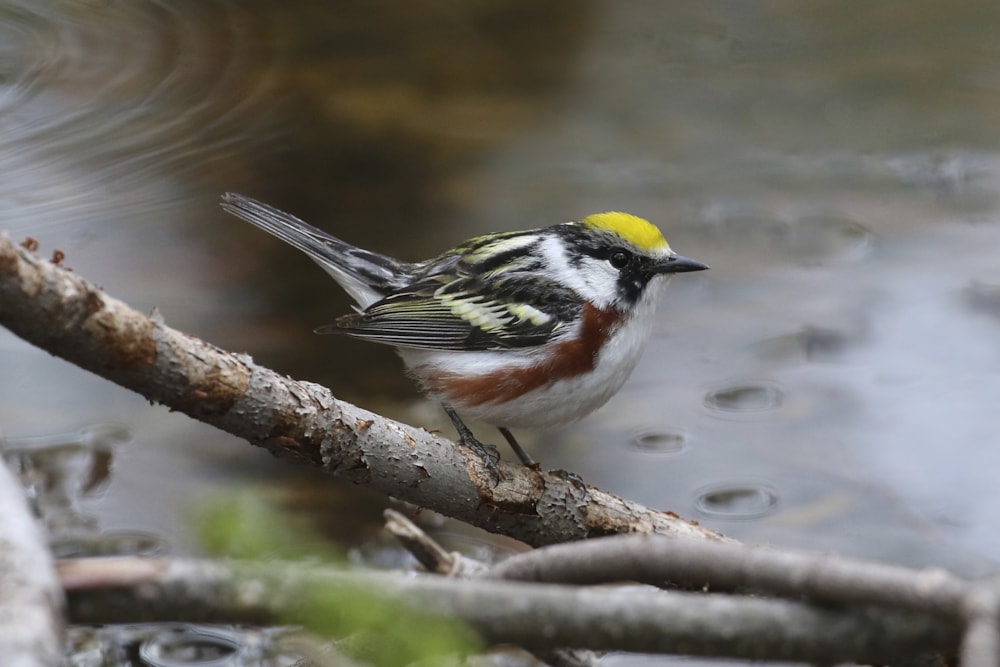
Chestnut-sided Warbler must rate as one of the more extraordinary spring liveries among the Nearctic wood warblers (Jamie Partridge).
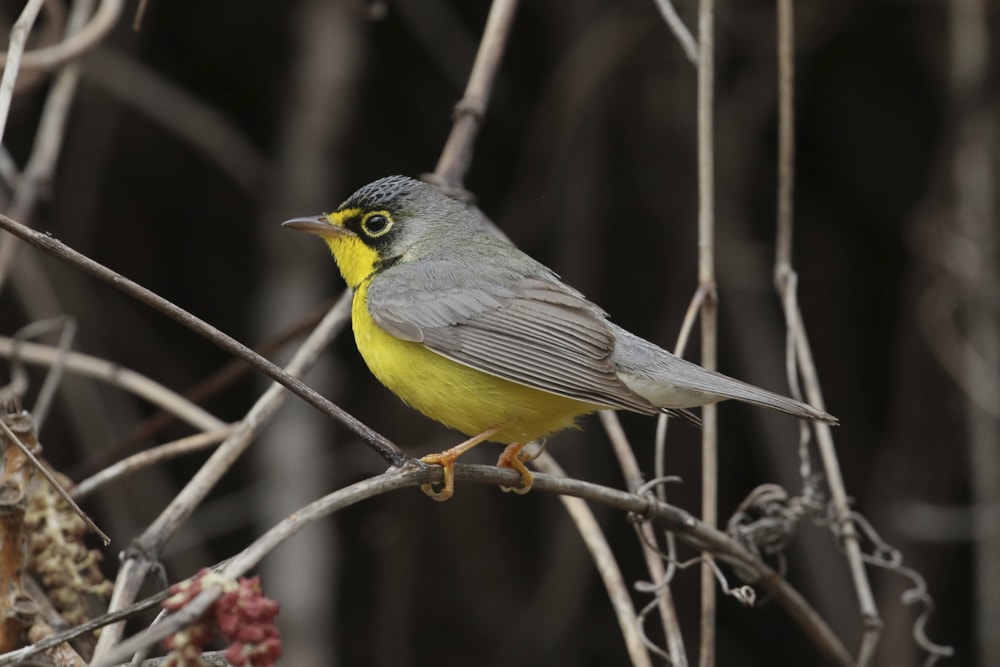
The luminous yellow and blue-grey Canada Warbler was often encountered (Jamie Partridge).
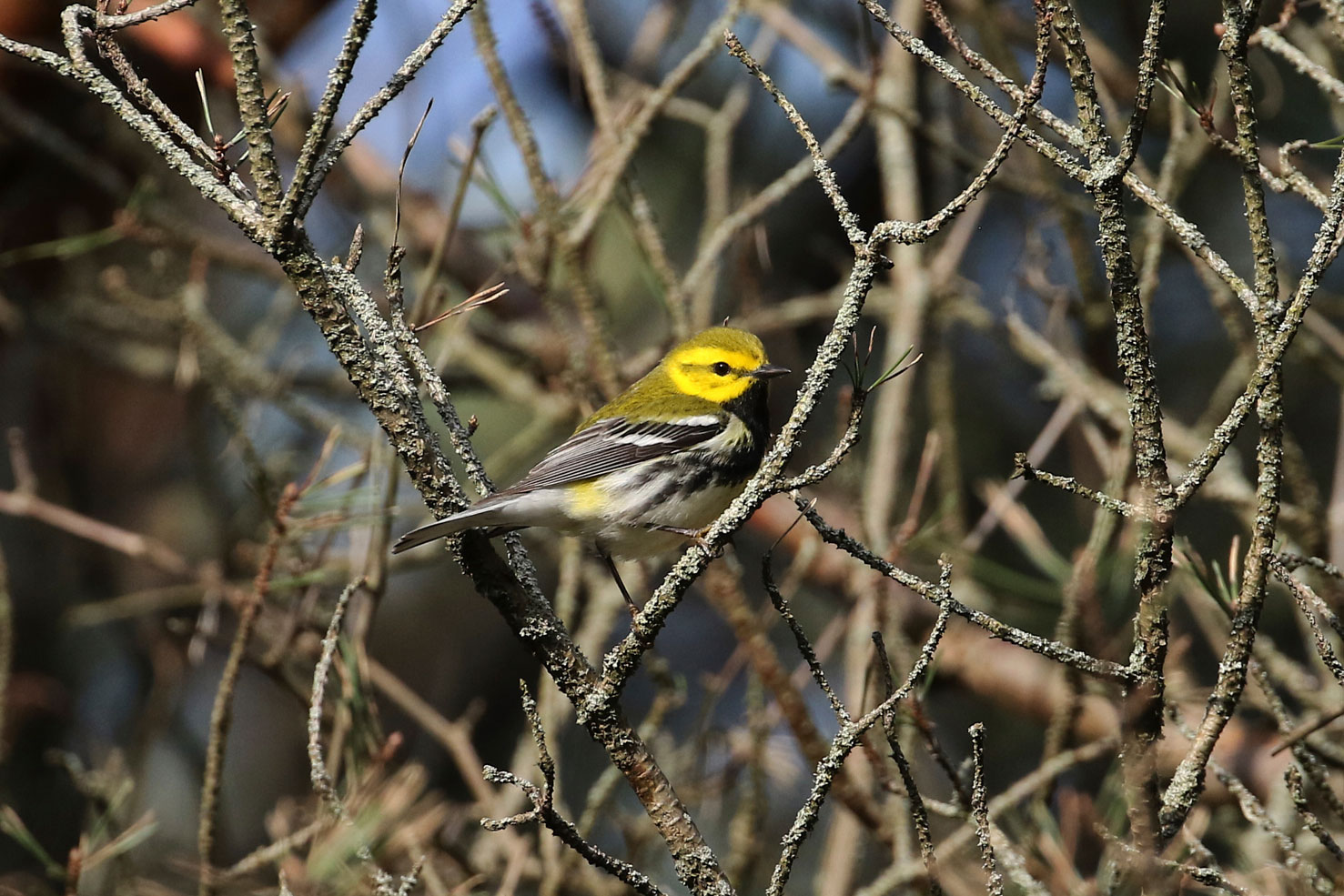
Black-throated Green Warbler possesses another delightful colour palate (Jamie Partridge).
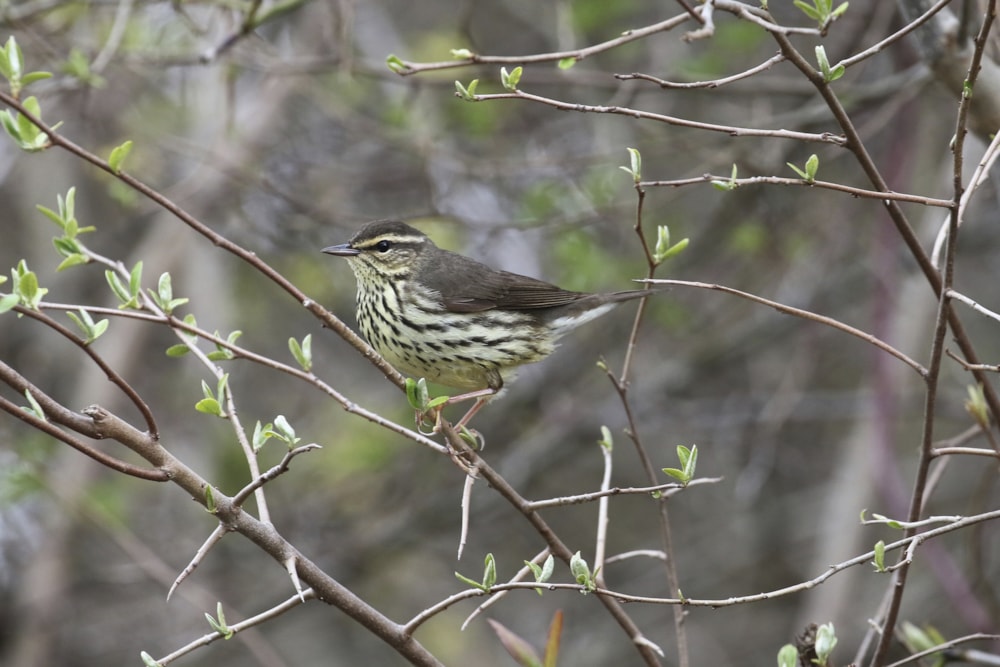
... much more subtle than the previous few species, Northern Waterthrush nonetheless always provides a charming encounter (Jamie Partridge).
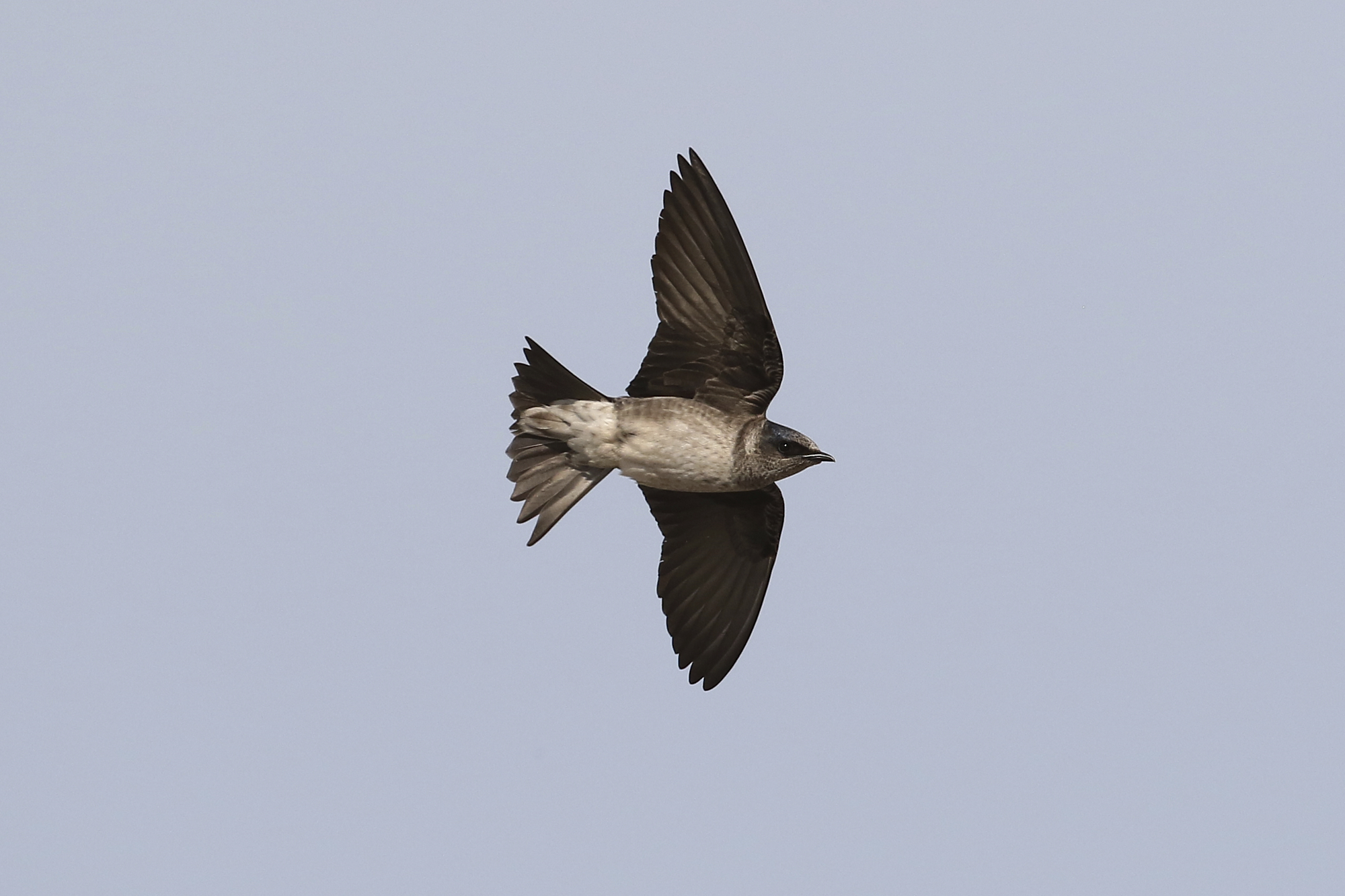
Of course, it's not all warblers: hirundines such as Purple Martin can be seen in the skies above Long Point (Jamie Partridge).
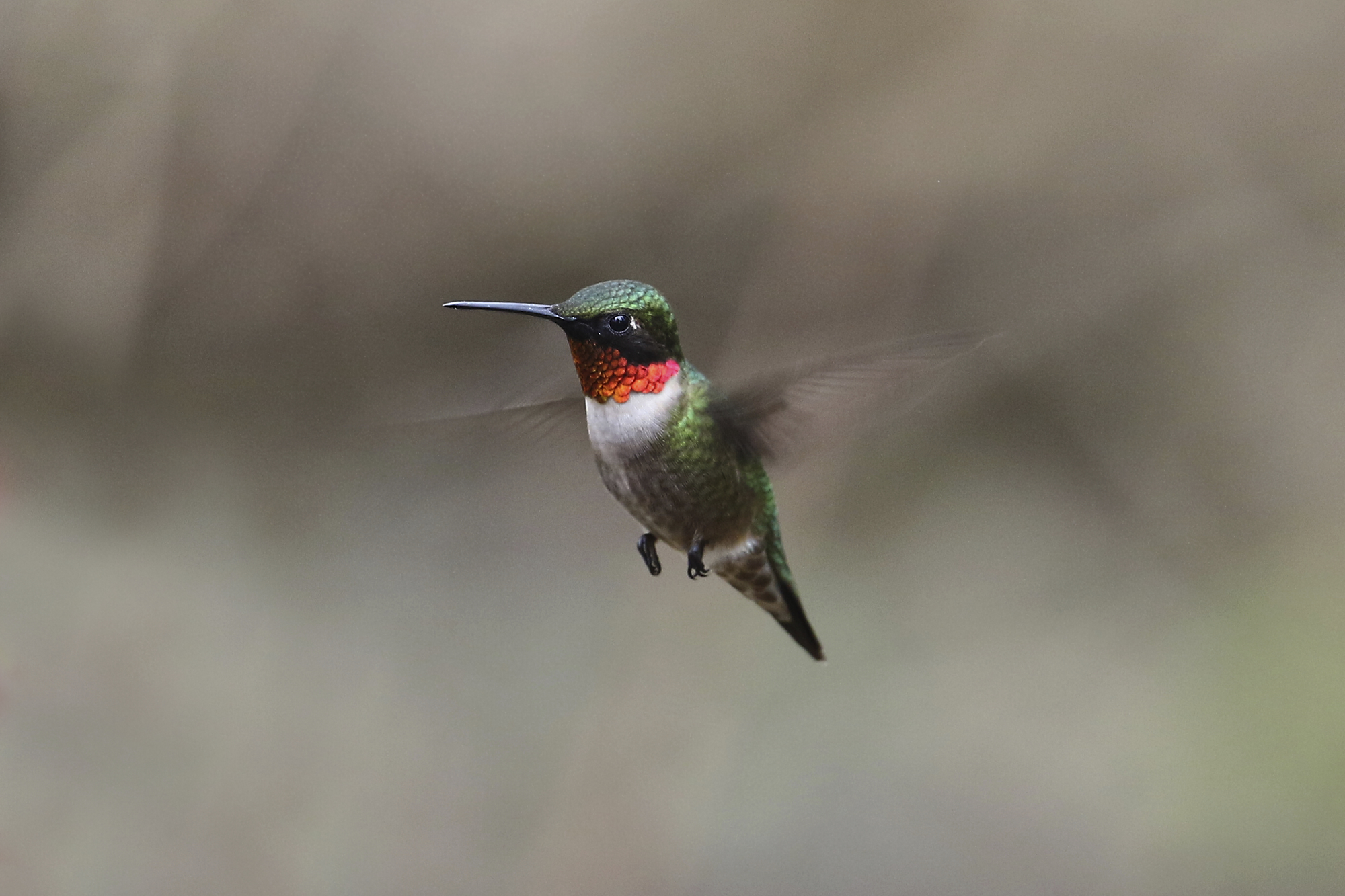
... Ruby-throated Hummingbirds busily zip about the gardens (Jamie Partridge).
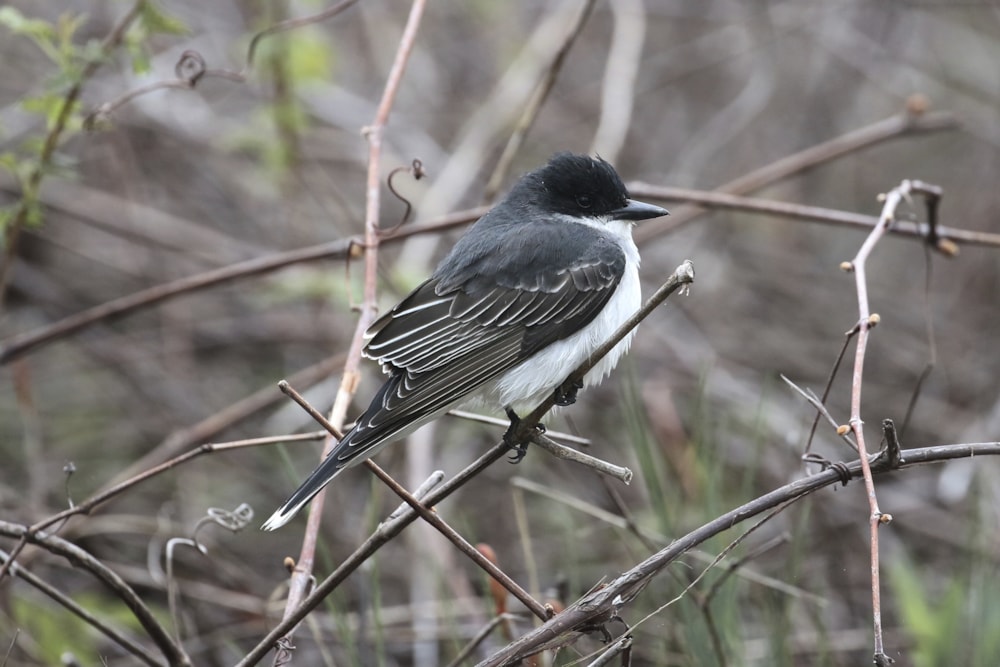
Eastern Kingbird moves through the area in good numbers (Jamie Partridge).
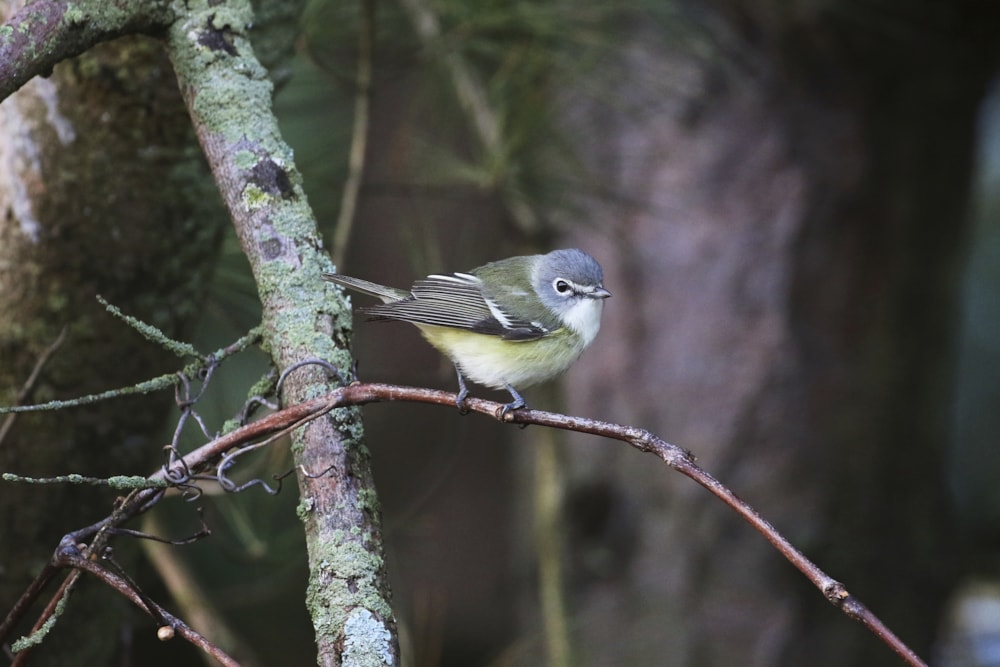
There are vireos, too: this is a Blue-headed Vireo, a species not yet recorded in the Western Palearctic (Jamie Partridge).

